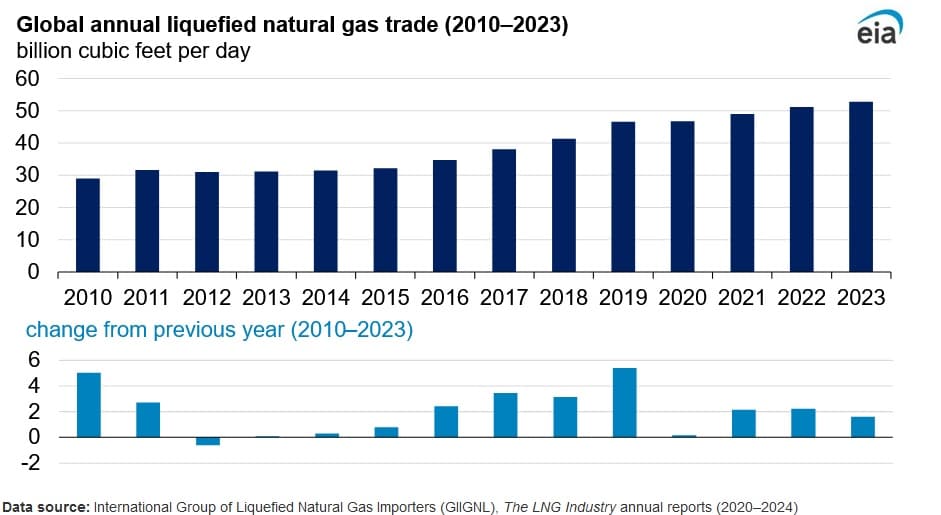Global LNG Trade Rose in 2023 Driven by Increasing Demand and Expanded Export, Import Capacity: EIA

Global Liquified Natural Gas (LNG) trade rose by 3.1 percent year-on-year during 2023 to an average of 52.9 billion cubic feet per day (Bcf/d), according to a July 11 report published by the U.S. Energy Information Administration. The increase in LNG trade can be attributed to rising natural gas demand and increased infrastructure capability to export and import LNG. There has been a substantial increase in the number of regasification and liquefaction plants across the globe, over the last decade.
LNG export capability has increased during 2023 predominantly in the U.S., Russia, Mozambique, Indonesia, Norway and Oman. U.S. exports rose due to the Freeport LNG terminal coming back online during February 2023 and operating at full capacity by April, having been offline since June 2022 due to a fire. Developers in Russia and Mozambique commissioned new projects during 2022 and they reached full production during 2023. Oman and Norway increased LNG production capacity by optimizing operational efficiency of current LNG plants. The Tangguh LNG export facility in Indonesia added a third train, increasing the country’s export capability.
The U.S. became the globe’s largest LNG exporter during 2023, with exports increasing by 12 percent compared to 2022. LNG exports from the U.S., Australia and Qatar accounted for 60 percent of total LNG exports in 2023. LNG exports from Alegria, Norway and Australia rose during 2023 compared to 2022.
LNG import capability increased mostly in Europe and Asia. Europe constructed several new floating storage and regasification units and increased regasification capability at existing terminals. New import capacity increased mainly in India, China, Vietnam, and the Philippines. Asian countries LNG imports rose by 3.5 percent or 1.2 Bcf/d year-on-year during 2023, with China being the top importer for a second consecutive year. Indian LNG imports rose by 11 percent or 0.3 Bcf/d year-on-year during 2023, in line with new regasification terminals becoming operational and lower LNG prices.
LNG imports rose by 1.4 percent or 0.2 Bcf/d year-on-year during 2023. Germany, a new importer of LNG, witnessed an increase in LNG imports during 2023. Netherlands, Italy and Finland also witnessed an increase in LNG imports during 2023 compared to 2022, due to an expansion in regasification capacity.
EnerKnol Pulses like this one are powered by the EnerKnol Platform—the first comprehensive database for real-time energy policy tracking. Sign up for a free trial below for access to key regulatory data and deep industry insights across the energy spectrum.
ACCESS FREE TRIAL